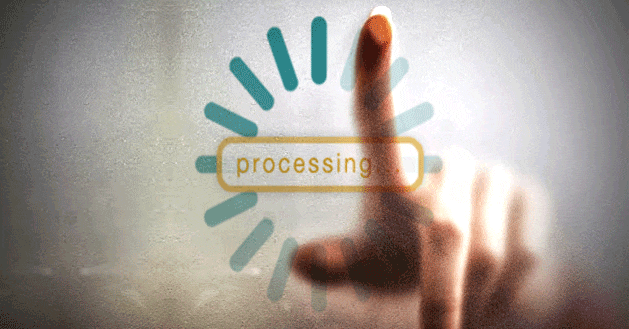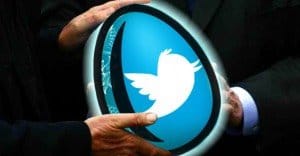 Written by ContentPowered.com
Written by ContentPowered.com
There’s a reason why everyone includes “be active” in every list of tips for properly using Facebook. When you go a day without posting, it’s not all that bad. When your silence stretches into a week, users start to worry that something went wrong. When your silence reaches a month, they’ve forgotten they even followed you.
At this point, some users will have removed you from their lists. Many won’t, simply out of laziness; after all, who regularly audits their Facebook followed pages anyway? That said, Facebook themselves will immediately begin to make the world harder for you. The reason? EdgeRank.
Facebook makes a calculation for every post, whether or not to show that post to a given user. One of the biggest factors deciding when a post will appear is past activity. If a user has recently been interacting with your page, they probably want to see more from your page, and so Facebook shows them more. Conversely, if they haven’t glanced at your page recently, Facebook begins to demote your content on their feed.
When your Facebook page goes silent for an extended period, no one is engaging. With no one engaging, no one is going to see the first posts you do make. You’re going to face an uphill battle to relevance among your fans.
If you have a dormant Facebook page, and want to revive it, try these tips.
1. Recover and Change Login Information
If your Facebook page has lain dormant for a long time, it’s entirely possible that you no longer fully control it. Maybe the intern you originally tasked to make it no longer works for your company. Maybe it was hacked in the interim – a whole other problem requiring additional steps to solve, of course – or maybe you simply forgot the password. In any case, start by recovering and changing the password. Remove any existing admin accounts unless those admins are still part of your Facebook team. Establish a new Facebook team and give them contributor permissions, reserving admin privileges for yourself.
It’s always important to make sure your page is secure and that your administrative information is unique. If you use the same password for several sites, a breach of Twitter could compromise your Facebook page, and vice versa.
2. Refresh and Update Profile Information
Depending on how long your Facebook page has remained dormant, the information in it could be very out of date. Did your office location move, necessitating a change of the address information you have posted? Did you change your logo to something a bit more modern, and your Facebook page still shows the old logo? Did you completely rebrand your business, changing everything that’s already been posted?
Take the time to go over your About page entirely. Remove and change all information that isn’t still relevant. Update your profile picture and cover photo; if you’ve been dormant too long, it’s possible you didn’t even have a cover photo. These initial signs of activity will help bring life back to your page, and they will make it look new and distinct from the old page.
3. Post and Assert Your Return
Chances are, your first few posts are going to be almost formulaic; “Sorry for the long hiatus, but we’re back and better than ever!” That’s okay. The point of these initial posts is not to be attractive to new users, not to guide users to your website or anything else. Very few users are even going to see them. If some do, and you receive comments, all the better! Cherish the users who care enough to follow you immediately upon your return.
The primary purpose of these initial posts is to establish a firm starting date for your return to life. Changing your profile can be a gradual process; posting says “we’re ready to start again.” Additionally, they work as a recent timestamp for anyone searching for your page and unsure if an old page is really you.
4. Develop a Social Media Plan
While you’re doing all of this, you need to develop a dedicated social media plan. Take this seriously; it’s going to be your foundation for months or years.
Scores of articles have been written about developing a social media plan, and you can look into them in more detail if you need to. For now, this brief outline should suffice to get you started.
- Determine a long-term goal. What are you working towards with your Facebook page? This can even be as broad as “re-establishing a presence on Facebook.”
- Determine short-term goals to meet those needs. How do you define success in measurable metrics, and what do you need to do to get from where you are now to where you want to be?
- Determine your audience; who are the people you’re trying to attract? What appeals to them, and how can you put that knowledge to use?
- Begin to craft targeted content. When you officially re-launch your Facebook page, you’re going to want to jump into an immediate ongoing stream of content. A faltering start hurts more than abandoning your Facebook page the first time did.
5. Promote Your Page Elsewhere
Add a Facebook widget or comments plugin to your website. Use one of the social sharing bars to add a Facebook button to individual posts. If you somehow have other active social profiles and only need to revive Facebook, post your Facebook link on your other social accounts.
The point here is to integrate Facebook with your other marketing channels. An active blog can funnel users to your Facebook page, where they can keep up with your content on a site of their choosing.
6. Announce Your Return Via Email
This is the most likely source of most of your incoming users after your Facebook page went dormant. Even if you haven’t bothered with any social media sites whatsoever, you’ve probably been building an email mailing list. This is your lifeline.
You can use this in two primary ways. First, you can input your list of emails directly into Facebook, to search for and find those users and suggest your page to them. Secondly, you can add a section to your next scheduled newsletter announcing that you’ve brought your Facebook page back from the dead and that you’re dedicated to keeping it active once more.
7. Pay for Ads and Promoted Posts
All of this is only going to pull in some of your existing fans. You’re going to have to get serious about reviving your Facebook page, and that means money. A Facebook ad campaign might only cost you a few dollars a day, but it can be incredibly effective.
Much has been said about successful advertising on Facebook, so take the time to do your research. Nothing kills momentum like a few unsuccessful ad runs. Take your time and do everything you can to promote your own success.
8. Maintain Activity
Whatever you do, don’t stop updating. If you abandon your Facebook page a second time, it will be plainly obvious that you can’t commit to using it as a marketing channel. Reviving it a second time will be an even harder process. At that point, your best option would be to contract an outside firm, pay them a monthly fee and have it taken out of your hands.





